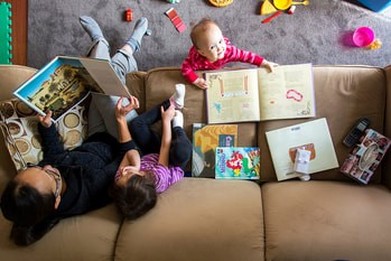A Book Review of The Invisible Boy
The Invisible Boy is a book I treasure as it is one after my own heart. I was one of those quiet children and I would venture to guess, the author, Trudy Ludwig, was one or knew one intimately. She shows incredible insight into the realities of an introverted child throughout this book. I truly appreciate this perspective as there are few people who recognize the inner workings of the quiet child. The majority of books on the subject focus on changing the quiet child to become more outgoing. This reflects the presumption in our society that being quiet is somehow less desirable than being outgoing. This book takes a refreshing spin and celebrates Brian for who he really is and not who society wants him to be. As important as it is for us to accept and celebrate cultural differences, it is equally important to accept and celebrate personality differences. The needs of quiet kids often get overlooked as they do not bring attention to themselves. They may not want to be the center of attention, but they still want to feel included. They may not want public recognition, but they still want to be recognized. They may not be the life of the party, but they want to be invited. We all can't be actors on the stage. Without the people in the background making the props, working the lights or making the costumes, the show will not go on. The struggles Brian encounters throughout the book are typical classroom situations that are often dreaded moments for the quiet child. For example, -Being told to team up with a partner for a project, -Classmates picking teams for sports -Others talking about things in which the quiet child wasn't included -Lunchtime Each one of these common classroom situations remind quiet kids of their standing in the classroom-INVISIBLE. Brian's experience to these awkward moments is described insightfully in the book as follows: "Brian looks at the floor, wishing he could draw a hole right there to swallow him up." I am certain that is a statement in which most quiet kids can relate! Wouldn't it be nice to provide a classroom environment where quiet kids didn't have to feel that way throughout the day? Brian's unique strengths are portrayed in the book. Similar to many quiet kids, Brian is sensitive to the feelings of others, and observes and notices many things that his louder peers may not. Brian's life in the classroom improves when he overhears the new boy in class, Justin, being teased and writes a special note to him. This is Brian's unique way of showing kindness in a quiet way that others may not notice. However, it only takes the kindness of one person to lead others to be kind. After receiving the note, Justin is then kind to Brian and includes him with another friend. After seeing Justin being kind to Brian, the other friend includes Brian too. And this kindness chain will spread to others. By the end of the story, Brian is recognized for his artistic talent in a small group situation, which makes him feel special and included. One of my favorite features in this book, is the creativity of the illustrator, Patrice Barton. The illustrations are large and colorful and grab the reader's attention. Brian's artistic talents are clearly displayed with many interesting and fun children's drawing. The special gem in this book is that Brian is in black and white at the beginning of the story, and the rest of the illustrations are in color. As the book progresses, and Brian starts to feel more included and comfortable, more color is added to his character. By the end of the story, Brian is drawn in full color. This is such a clever visual detail that adds much intensity to the story. Let's not forget, the quiet kids need oil too. Make an effort to notice them and accentuate their strengths. The world will be better, and more colorful, for it. To purchase this book, and check out others by this author, click HERE. An Activity Idea for The Invisible Boy Materials Needed: -Paper -Pencil -Crayons -Envelope Directions:
Ask the child if there was a time they felt invisible like Brian. If so, have the child draw a picture of what happened and discuss how that felt when it happened. Discuss their personality and Brian's personality. How are they the same? How are they different? Have the child think of someone at school, in their neighborhood or family, that may feel invisible. Or someone they witnessed being teased or bullied. List some ideas they can do to make them feel included and valued. Using Brian's idea in the book, have the child write a note to this person they are thinking of. What can they say to make this child feel included or special? Have the child draw a picture on the note to show the child that they are noticed. Then ask, How do you think the child will feel when they get your note? How will you feel about giving them the note?
2 Comments
8/22/2021 04:51:59 pm
I'm so glad you find The Invisible Boy a helpful resource to help your colleagues promote social-emotional learning in young readers. Thank you!
Reply
Vasilia Graboski
8/22/2021 05:39:01 pm
My pleasure,Trudy. Thank you for all you do to promote kindness in the next generation!
Reply
Leave a Reply. |
Follow me on Twitter, Pinterest and LinkedIn
Categories
All
|

 RSS Feed
RSS Feed
